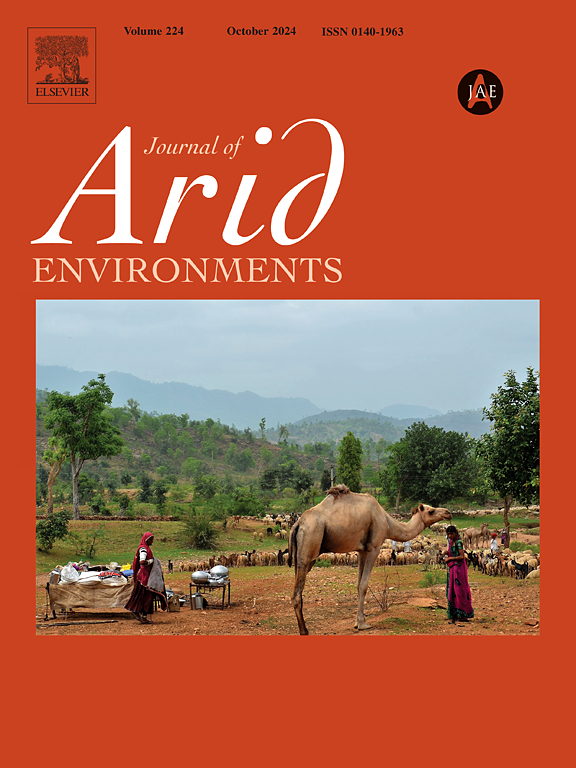Ecological resilience of Gallon's curse (Cenchrus biflorus Roxb.) in hyperarid and hypersaline environments
IF 2.5
3区 环境科学与生态学
Q2 ECOLOGY
引用次数: 0
Abstract
Cenchrus biflorus Roxb., a resilient C4 grass species, thrives across hyperarid and hypersaline environments due to its remarkable structural and functional plasticity. This study investigated ecotypic variations in morpho-anatomical and physiological traits among populations collected from ecologically distinct sites in Pakistan, including saline deserts, arid plains, and semi-arid regions. Morphological adaptations such as reduced leaf area, enhanced root biomass, and increased leaf number were evident under arid stress. Anatomical modifications—including thickened epidermis and endodermis, enlarged cortical and parenchymatous regions, narrow metaxylem vessels, and high trichome and bulliform cell densities—contributed to water conservation and ion regulation. Physiological resilience was linked to elevated levels of osmoprotectants (proline, glycine betaine, soluble sugars), stress enzymes (catalase, peroxidase, superoxide dismutase), antioxidants, and photosynthetic pigments. Ion homeostasis was maintained through restricted Na+ uptake and compartmentalization. Multivariate analyses revealed strong associations between environmental variables (temperature, salinity, soil nutrients) and trait expression. The findings highlight the critical role of phenotypic plasticity in the ecological success of C. biflorus, underscoring its potential utility in arid land restoration and climate-resilient forage development.
高干旱、高盐环境下加伦草的生态恢复力
凤仙花。是一种具有弹性的C4草,由于其显著的结构和功能可塑性,可以在超干旱和高盐环境中茁壮成长。本研究从巴基斯坦不同的生态地点(包括盐碱地、干旱平原和半干旱区)收集了不同种群的形态解剖和生理特征的生态型差异。在干旱胁迫下,植物的叶面积减少、根系生物量增加、叶数增加等形态适应性明显。解剖上的改变——包括增厚的表皮和内胚层、增大的皮质和薄壁组织区域、狭窄的韧皮部血管、高的毛状和球泡状细胞密度——有助于水分保存和离子调节。生理弹性与渗透保护剂(脯氨酸、甜菜碱、可溶性糖)、应激酶(过氧化氢酶、过氧化物酶、超氧化物歧化酶)、抗氧化剂和光合色素水平的升高有关。通过限制Na+摄取和区隔化来维持离子稳态。多变量分析表明,环境变量(温度、盐度、土壤养分)与性状表达之间存在较强的相关性。这些发现强调了表型可塑性在双歧草生态成功中的关键作用,强调了其在干旱土地恢复和气候适应型饲料开发中的潜在效用。
本文章由计算机程序翻译,如有差异,请以英文原文为准。
求助全文
约1分钟内获得全文
求助全文
来源期刊

Journal of Arid Environments
环境科学-环境科学
CiteScore
5.70
自引率
3.70%
发文量
144
审稿时长
55 days
期刊介绍:
The Journal of Arid Environments is an international journal publishing original scientific and technical research articles on physical, biological and cultural aspects of arid, semi-arid, and desert environments. As a forum of multi-disciplinary and interdisciplinary dialogue it addresses research on all aspects of arid environments and their past, present and future use.
 求助内容:
求助内容: 应助结果提醒方式:
应助结果提醒方式:


